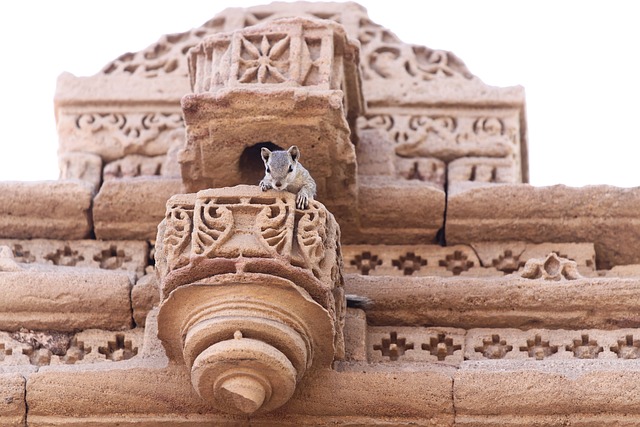This post was inspired by a writing prompt in the Worldbuilding Community - Worldbuilding Prompt #862 - A specific god/goddess
It's intended to give a bit more background on my last post - Worldbuilding Prompt #861 - The Shrine of Smintheus
Enjoy !

Imagen de Bank J en Pixabay
In my homebrew Dungeons & Dragons setting of Argull, most of the past history is only detailed at a local level. A lot of this is because the place has grown organically over the years.
As a group of players sets off on their adventures, they might visit a previously unexplored area. Fleshing it out is a mix of me preparing places for them to visit, together with feeding in ideas they inadvertently come up with, and then reconciling it all to other areas nearby that have been explored. Any inconsistencies are easily explained as travellers' tales that have grown taller in the telling.
But there is one piece of past history that applies across the world. At some time in the past, the world was in a bronze age. The exact date of it's end has never been specified, but somewhere between one and two thousand years before the "current" date.
As for how it ended, that happened when all of the old gods except Smintheus was hunted down and slain after they became corrupt and degenerate - I wrote a post a year or two back telling that story - Worldbuilding Prompt #375 - An Angel And A Demon. The new gods who replaced them were a mix of "standard" Dungeons & Dragons deities, and gods from Norse mythology.
But the old gods who were slain were drawn from Greek mythology. Not the Classical Greek gods we're familiar with; I used the much older Helladic gods from the Mycenaean period. It's not easy, because although some are the familiar ones from the more recent period, many of them are still little known or have different portfolios.
Smintheus is one of my favourites. Almost everything about him is wonderfully contradictory and confusing !
His actual appearance was never (to my knowledge) made clear, but I'm assuming he took human form of some kind, like most Greek deities. Modern linguists think that part of the name derives from ancient Luwian, and this is supported by his worship being centred around north-west Asia Minor, in the southern part of the Troad.
He was described as a mouse god, or "Lord of Mice", and was most often seen as a plague god, either of disease or a plague of small rodents (the Trekkie in me thinks of him as the God of Tribbles). Additionally he had prophetic powers which led to his merging with Apollo by the start of the Classical period.
The main site associated with Smintheus is the Temple of Apollo Smintheus in Turkey. It was built around 150 BC, but on a site which had been colonised by Greeks in around 800 BC. Smintheus is also quoted in the Iliad, which was also composed around that time, although referring back to the Trojan War some 450 years earlier.
I find that dropping in little-known real world deities into a D&D setting can be really helpful in developing depth, as they have complexity and baggage not often present in the cut & dried standard D&D gods.
In the case of Smintheus, in Argull he has gradually faded from "current" religions, and is mostly a source of inspiration for lost temples and shrines. For the last post, the problem for the robbers was that the shrine focused on the plague part of Smintheus' portfolio, and they got what was coming to them !